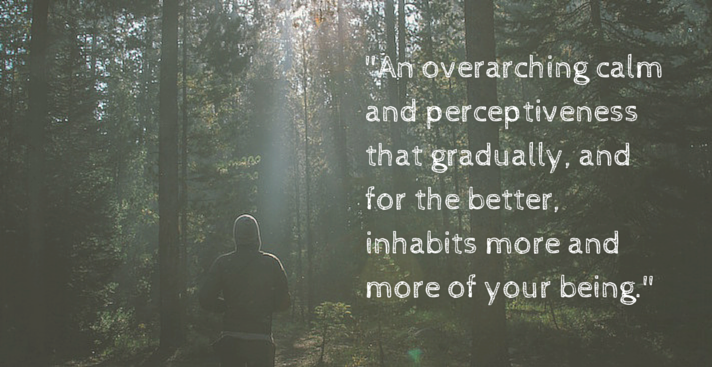Get a glimpse of what learning and practicing the TM technique is like in these excerpts from Ours Magazine.
His personal experience
“The transformation into mega-zen, earth-person lover is far from complete. The under-the-breath, or more often, overt swearing at sources of frustration (myself included) as well as the face-punchy, eye-gouged-out urges are ever present. Nonetheless, their occurrence is strikingly less regular. More importantly, the consistent calm and control that at times seemed so transitory appear to be in the slow but steady process of setting up a more permanent residence.”
“By control, I don’t mean self-control for this implies some form of effort – count to ten, take a deep breath, or several, put it out of mind, etc. Rather, I found myself effortlessly calm in situations in which I would have once been anything but. Not always, of course, as I mentioned, but certainly more frequently. The control I speak of (I’m going to have to get a bit lovey-dovey here) is of your environment and your life. An overarching calm and perceptiveness that gradually, and for the better, inhabits more and more of your being.”
The different types of meditation
“Each time an individual transcends and returns…she or he returns with a little bit more of this inherent serenity and acuity.” “The different styles of meditation have different manners by which they can be classified. Two broad categories are concentrative and contemplative meditation. In the first, one focuses her or his attention on an object, such as the breath, a sound, or perhaps even a candle. The goal is to maintain attention on this object. If the mind wanders, bring it back to the object. The amount of control exercised can vary from one type of meditation to another. Contemplative meditation, on the other hand, consists of considering a concept, such as love, or a spiritual figure. A prototypical example of this type of meditation is prayer.
“According to its proponents, Transcendental Meditation falls into neither of these categories, the aim being not to focus, but rather to allow the mind to descend, gently, into a particular state of consciousness. A state into which it travels voluntarily, practically effortlessly, beyond conscious and unconscious thought – that of pure awareness and perfect calm. Each time an individual transcends and returns, the idea is that she or he returns with a little bit more of this inherent serenity and acuity.”
How to learn
“So how does it function, this Transcendental Meditation? To be perfectly frank, it’s a bit like Fight Club. You feel amazing afterwards and you can’t talk about it. I exaggerate slightly with regards to the latter point but before embarking on the learning process, one must promise not to divulge certain aspects of the learning process.
“A bit cultish sounding? I thought so too when at my first exploratory appointment I was informed of this. However, advocates say that only trained individuals can correctly transmit all aspects of the technique, hence the not wanting certain bits of information floating about willy-nilly to be explained by the less qualified via the internet, books, audiotapes etc. As one who has attempted and failed miserably at practising in the long-term other meditation techniques through the aid of a book or the internet, I must say that having a teacher to guide the learning process and to whom you can ask questions is invaluable.”
You can read the full article here.




